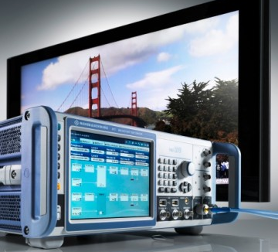New R&S BTC Tackles ATSC 3.0 Testing
COLUMBIA, MD.—With regulatory approval behind it and the last individual standards in the suite of ATSC 3.0 standards nearing finalization, the focus is now turning to actual implementation of the next-gen TV standard on the broadcaster and CE maker sides of the equation.

Against that backdrop, Rohde & Schwarz has announced the R&S BTC broadcast test center, a high-end signal generator with a software-based real-time coder for ATSC 3.0. The R&S BTC will enable ATSC 3.0 receiving equipment and terrestrial tuner chipset manufacturers to test the performance of their product to ensure compliance with the next-generation television from a single unit.
With optional support for real-time changes in transmission parameters, the R&S BTC can immediately influence signal characteristics and structure. The R&S BTC provides a complete signal chain from internal playout of an ATSC 3.0 signal via its modulation to simulating a transmission. The product offers excellent RF performance with required parameters, the company said.
The unit has two RF paths and additional means of synchronization via the STL protocol by using timestamps and a 10MHz and 1pps reference connection. This can be used for testing the compliance of equipment with the new requirements of ATSC 3.0 single frequency networks (SFN) in networks.
The R&S BTC offers interruption-free modulation of ATSC 3.0 signals with audio, video and data content in real time. It supports internal and external sources with MMGen, IP (ROUTE/DASH, MMT, TS) and STL interfaces.
The new product can simulate a variety of interference types, such as noise and facing, and wireless signals, including LTE and mobile TV, the company said.
More information is available on the Rohde & Schwarz website.
For a comprehensive list of TV Technology’s ATSC 3.0 coverage, see our ATSC3 silo.
Get the TV Tech Newsletter
The professional video industry's #1 source for news, trends and product and tech information. Sign up below.
Phil Kurz is a contributing editor to TV Tech. He has written about TV and video technology for more than 30 years and served as editor of three leading industry magazines. He earned a Bachelor of Journalism and a Master’s Degree in Journalism from the University of Missouri-Columbia School of Journalism.

